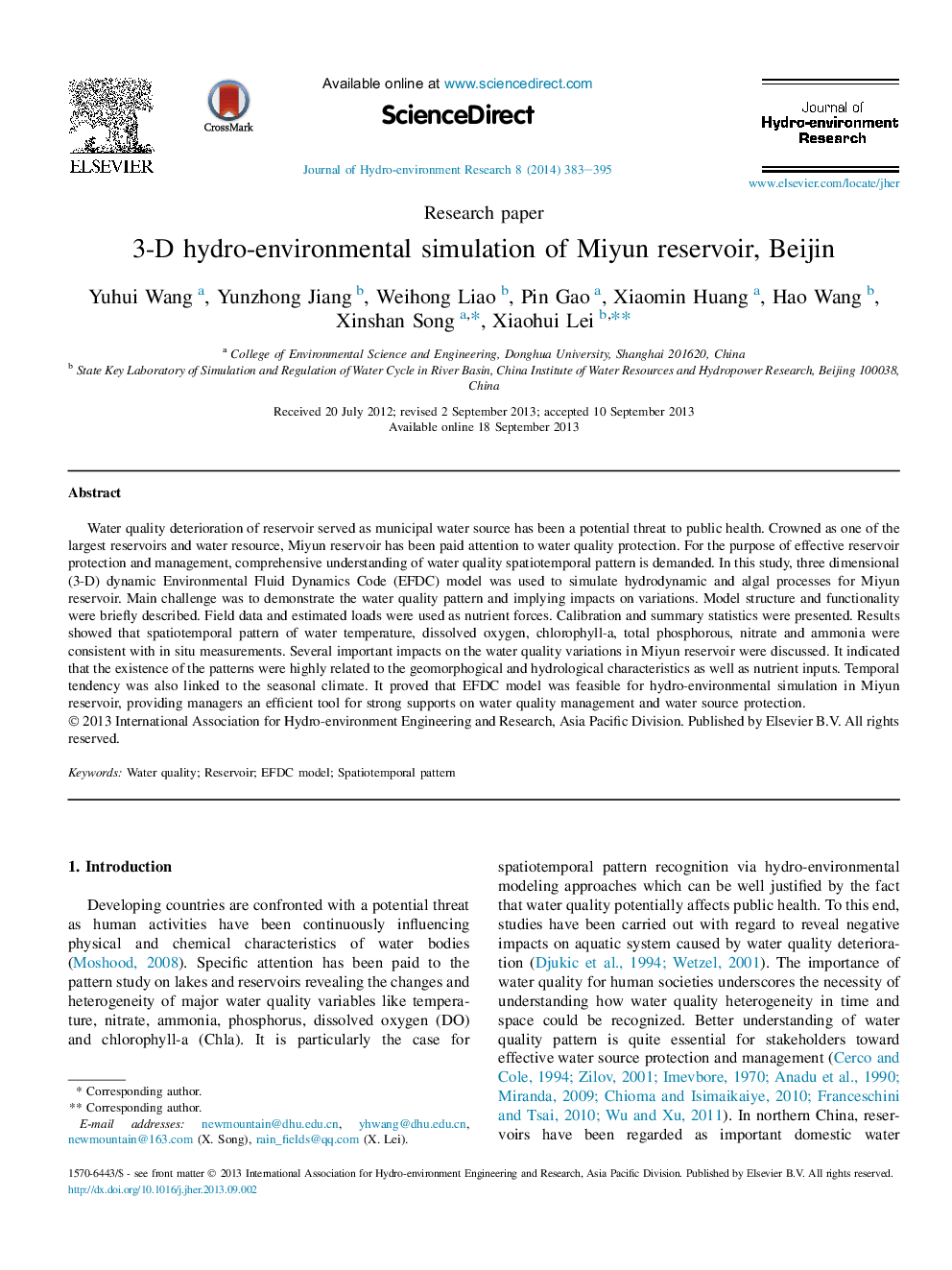| Article ID | Journal | Published Year | Pages | File Type |
|---|---|---|---|---|
| 4493656 | Journal of Hydro-environment Research | 2014 | 13 Pages |
•We adopted EFDC model in reservoir water quality simulation.•In-outflow and nutrient boundaries and atmospheric forces were assigned.•Model parameters were calibrated.•Spatiotemporal pattern of temperature, DO, Chl-a, nitrate, ammonia and TP were analyzed.
Water quality deterioration of reservoir served as municipal water source has been a potential threat to public health. Crowned as one of the largest reservoirs and water resource, Miyun reservoir has been paid attention to water quality protection. For the purpose of effective reservoir protection and management, comprehensive understanding of water quality spatiotemporal pattern is demanded. In this study, three dimensional (3-D) dynamic Environmental Fluid Dynamics Code (EFDC) model was used to simulate hydrodynamic and algal processes for Miyun reservoir. Main challenge was to demonstrate the water quality pattern and implying impacts on variations. Model structure and functionality were briefly described. Field data and estimated loads were used as nutrient forces. Calibration and summary statistics were presented. Results showed that spatiotemporal pattern of water temperature, dissolved oxygen, chlorophyll-a, total phosphorous, nitrate and ammonia were consistent with in situ measurements. Several important impacts on the water quality variations in Miyun reservoir were discussed. It indicated that the existence of the patterns were highly related to the geomorphogical and hydrological characteristics as well as nutrient inputs. Temporal tendency was also linked to the seasonal climate. It proved that EFDC model was feasible for hydro-environmental simulation in Miyun reservoir, providing managers an efficient tool for strong supports on water quality management and water source protection.
